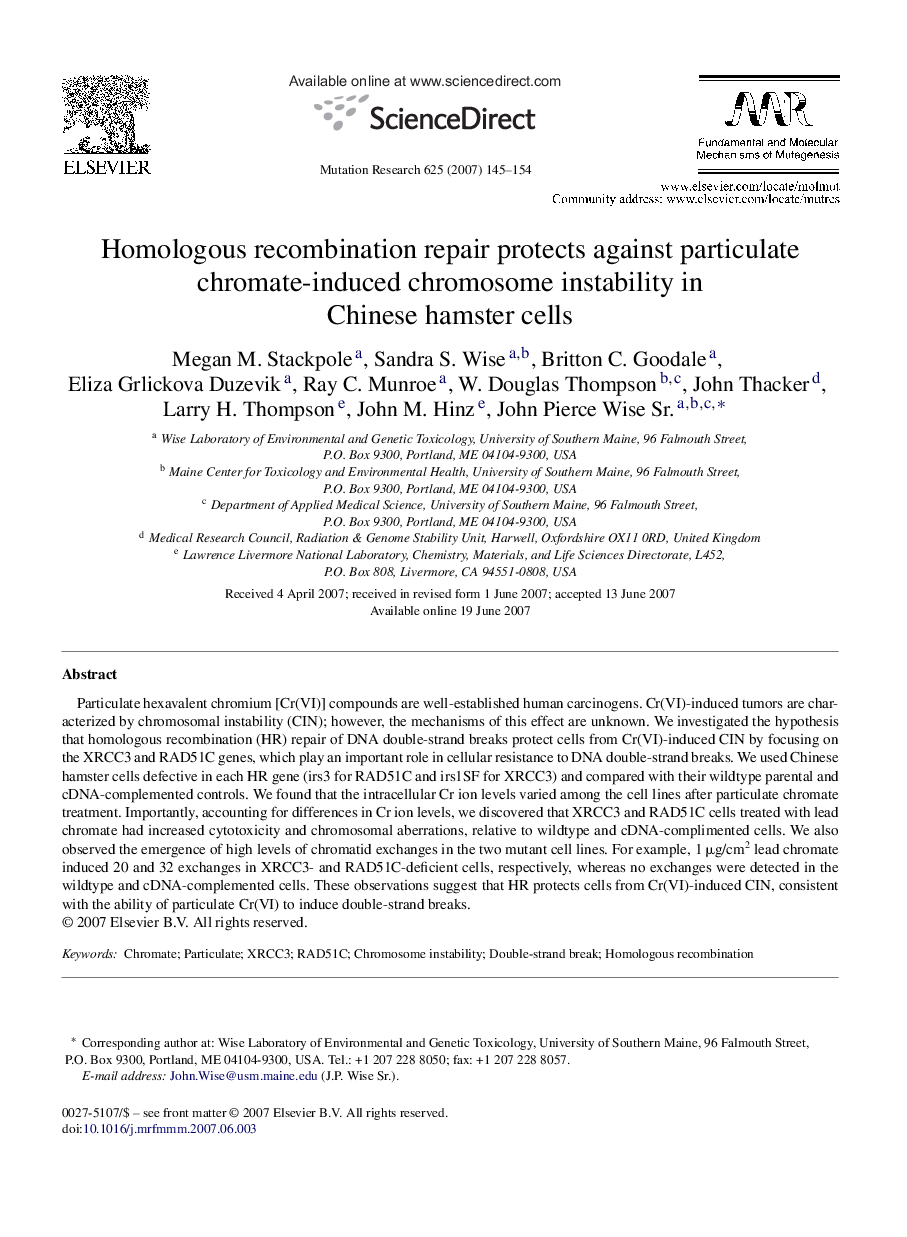| Article ID | Journal | Published Year | Pages | File Type |
|---|---|---|---|---|
| 2147276 | Mutation Research/Fundamental and Molecular Mechanisms of Mutagenesis | 2007 | 10 Pages |
Particulate hexavalent chromium [Cr(VI)] compounds are well-established human carcinogens. Cr(VI)-induced tumors are characterized by chromosomal instability (CIN); however, the mechanisms of this effect are unknown. We investigated the hypothesis that homologous recombination (HR) repair of DNA double-strand breaks protect cells from Cr(VI)-induced CIN by focusing on the XRCC3 and RAD51C genes, which play an important role in cellular resistance to DNA double-strand breaks. We used Chinese hamster cells defective in each HR gene (irs3 for RAD51C and irs1SF for XRCC3) and compared with their wildtype parental and cDNA-complemented controls. We found that the intracellular Cr ion levels varied among the cell lines after particulate chromate treatment. Importantly, accounting for differences in Cr ion levels, we discovered that XRCC3 and RAD51C cells treated with lead chromate had increased cytotoxicity and chromosomal aberrations, relative to wildtype and cDNA-complimented cells. We also observed the emergence of high levels of chromatid exchanges in the two mutant cell lines. For example, 1 μg/cm2 lead chromate induced 20 and 32 exchanges in XRCC3- and RAD51C-deficient cells, respectively, whereas no exchanges were detected in the wildtype and cDNA-complemented cells. These observations suggest that HR protects cells from Cr(VI)-induced CIN, consistent with the ability of particulate Cr(VI) to induce double-strand breaks.
